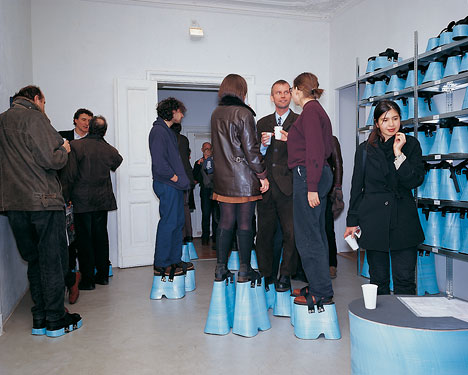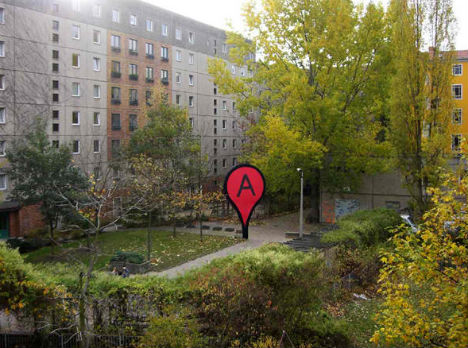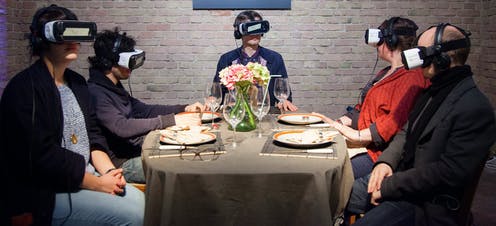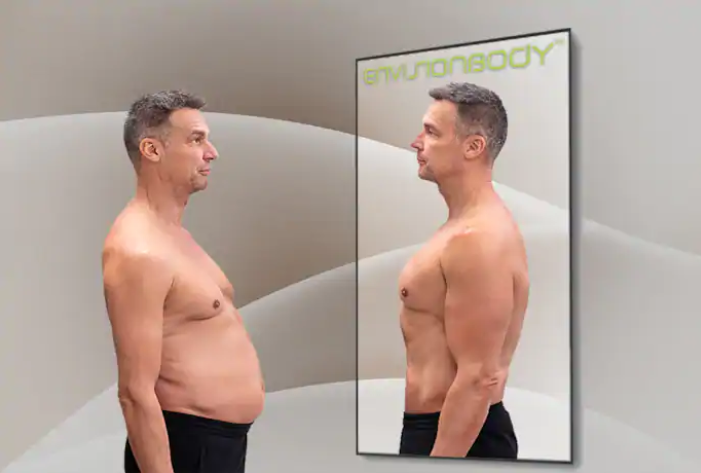
Extra section - A reality check
A story on HyperNormalisation, obese reality, VR, AR and shared hallucinations (45 minutes)
Why this extra section?
Two words: for fun (or to make you anxious). You decide.
In section five we talked about fakers and fake news. If everything can be faked, are we heading for a post-truth society? Technology and reality are very closely connected. We think this is very interesting, and would like to explore it some more, but it does not really fit into our one hour crash course. Still, we want to offer you the opportunity to think about the impact of technology in as many ways as possible. That is why we have bonus sections like this.
You don't get a certificate for it, but, again, we think it's a lot of fun!
In this bonus section we aim to confuse you a bit and provide you with some new ideas considering thinking about technology and reality. We will cover the following topics:
- Are we living in a computer simulation?
- Does an obese reality exist?
- What is hypernormality?
- How does the online world change the way we see 'reality?'
- What is the impact of virtual reality and mixed realities?
Are we living in a computer simulation?
In political discussions you will often hear people saying that reality does not exist. Two parties can both use the same facts and arrive at completely different conclusions. Or they can use different facts or even alternative facts. The way we look at reality is shaped by what we believe, so there is no shared reality.
But there are also people who take that concept further. Elon Musk, for example, believes (or so he says, maybe he's working on his Iron Man - Image) that we're actually living in a computer simulation. This sounds a bit like the movie The Matrix, but Elon Musk is dead serious.
Watch an explanation in the video below (4 minutes)
Of course, there are people that doubt Elon Musk's state of mind. And it does sound a bit uncanny, but it is certainly not an uncommon thought experiment among philosophers. There are a lot of serious people talking about it. Nick Bostrom wrote a famous paper on the topic (see additional materials). It is not entirely unthinkable. After all we once believed that the sun revolved around the earth.
In 2005 it was even 'proven' by quantum scientists that reality only exists when we look at it or measure it.
An obese reality
Anil Seth explains that the way we experience reality is just as much outside-in as inside-out. Our brain hallucinates our reality. How we are structured on the inside (in our head) determines also our reality. "When we share our hallucinations, we call it reality."
In the video (12 minutes) he explains it with a few cool examples.
There are more examples in which it is empirically proven that the real reality is above all very personal. It may have to do with your beliefs, your religion, your fantasy, but the real proof is in something as simple as the physical. Obese people, for example, who are less mobile, estimate distances to be longer.
They have a different obese reality. Or people with a phobia. The same goes for short or tall people. Reality does look different when everyone has the same height.

(Picture from core 77)
Hypernormality
The term hypernormality was invented by the anthropologist Alexei Yurchak who, in 2006, described the paradoxes of the Soviet Empire from 1970 to 1980. The idea was that everyone in that Soviet Empire knew that the system did not work and everyone knew that everyone knew that the system did not work. However, since there was no alternative, everyone pretended the system was functioning.
At some point, this delusion became the new reality: hypernormality.
There are those who believe that HyperNormalisation is happening again. People like Adam Curtis. Check the impressive trailer of his film from 2016 below (2 minutes).
The idea is that a fake version of reality has been created with a simpler story and that strange things are constantly happening, which we accept as normal, while we actually know that they are not normal. Absurdly cheap stuff from China, a war in Iraq and Afghanistan with no consequences for life in America, the exposure of corrupt politicians and bankers without consequences, a reality TV star as president, Brexit (give people a FUCK OFF button and they will push it), money that is printed just like that, economic growth that comes out of nowhere, and so on.
We know it is all a lie, but it is safer to pretend that it is normal.
The impact of the online world
Above we saw some extreme examples of looking at our reality. We are living in a computer simulation. We hallucinate reality. We accept reality because there is no alternative. All very depressing or uplifting depending on where you stand. For now, lets assume there is something like reality and investigate how this reality has changed with the emergence of online and social media.
We could talk about this forever, but we just want to give you some examples so you get an impression.
One: the great comparison machine
"Online reality" is very different from the 'real reality.' Online most people post pictures of that one beautiful moment when the sun goes down or the forests are snowy or that they are looking cool on stage. They do not post pictures when they are hanging limply on the couch. We all know this, but it doesn't matter. It still make us unhappy. A lot of research has been done that shows that we become more unhappy when we see that other people are doing better. However, we are not becoming happier when we see that other people are doing worse. It is a lose/lose situation.
So if comparing is not wise, using social media is not a smart thing to do, because social media is the great comparison machine.
Two: beautiful people
And it goes further than just beautiful pictures. Instagram has filters. Snapchats are edited. In China, where they use Baidu, almost all photos are edited and it is considered inappropriate to post an unedited photo of someone. Like posting a photo of someone with his zipper open. In fact, in 2017 half of the applications for nose jobs were made because people had noticed that their noses were quite big on their selfies. It had to these potential patients that smartphones have wide-angle lenses, which distort the image.
Most of them did not care.
There are enough people, including many plastic surgeons and researchers, who claim that Instagram has created a new beauty ideal. According to plastic surgeons, clients are getting younger, partly due to the rise of social media. Editing apps and filters on applications such as Instagram and Snapchat create an unrealistic image of beauty. Influencers, models and celebrities (think Kylie Jenner and Kim Kardashian) don't even deny that they like using filters for the perfect picture. In fact, they make money from it. For example, Kylie Jenner recently launched a number of Snapchat filters, so that you can create a special "Kylie look." New research now shows that taking selfies has a negative effect on the self-image of young women in particular, with major psychological consequences.
The New York Times called the new generation of women "Fembots." Women who distort and edit photos to make them look almost surreal. The English newspaper "The Independent" researched the effect that Snapchat filters specifically have on our self-image. This shows that our beauty standards are influenced by the frequent making of selfies, with filters. Researchers have even named the condition "Snapchat dysmorphia."
The scientists describe "Snapchat dysmorphia" as a psychological condition in which people aim for the edited version of themselves. By repeatedly taking selfies with filters, people get a negative self-image when they look in the mirror. They compare their real selves to the filtered version of themselves. As a result, they strive for this "better version." Filters that polish away imperfections are the most dangerous, according to the researchers. Cosmetic doctors say in the interview with The Independent that they see the condition as a form of dysmorphophobia, or imagined ugliness.
Research by the University of Amsterdam has previously shown that the more young people use social media, the more they attach importance to their appearance and the more they are inclined to undergo cosmetic surgery. The Independent's investigation also confirms this trend. "Previously, people came up with images of celebrities or models they admired and thought they looked good. But with the introduction of social media and filters, more patients are coming up with images of filtered versions of themselves," a plastic surgeon said in the interview. "This is an alarming trend because those filtered selfies often present an unattainable appearance and blur the line between reality and fantasy," said dermatologist Neelam Vashi.
In short, the possibilities to manipulate online reality have consequences in physical reality. Let's check a short video on this (4 minutes):
Three: Insta-worthy
The Travel magazine "TravelNext" claimed that millennials see the Instagrammability of the holiday destination as an important factor in making the choice. The article speaks of a small survey and is not very reliable, but it fits in with a broader trend of being Insta-worthy. It's not about being fun. It is about looking like it is fun. Typical in that respect was the April Fools' Day joke by TUI where you could win a vacation with a photographer.
It also sometimes means that it is no longer necessary to change reality, as long as the image that is posted can be changed. A good example of this is the option in Photoshop and some apps to get rid of tourists. Take a picture, remove the tourists automatically. Deep fakes will add a new dimension to this trend.
The way digital and analog reality influence each other is changing. We used to use terms from the analog world to influence the digital world. For example, the digital highway. The desktop. The trash bin. Now you see and hear more and more the Boomeranged Metaphor (term from Koert van Mensvoort) in which digital terms are used to describe novelties in the analog world.
For example, that house is "Insta-worthy." Or a physical Google Marker (picture from Weburbanisation).

In conclusion, we can say that we create images online that are a variation on reality. Pictures look better and people look better. But then, when we look up from our screen and stare outside again, real reality is increasingly disappointing.
Availability & Negativity Bias
So, the online world influences the offline world by creating a digital twin that looks better then the original. And if we compare ourselves to that better-looking image we might become unhappier.
This is not the only way the online world influences us. In crash course two we talked about things like Filter Bubbles. Remember? Filter Bubbles are a state of intellectual isolation that allegedly can result from personalised searches when a website algorithm selectively guesses what information a user would like to see based on information about the user, such as location, past click-behaviour and search history.
These algorithms do not do this with the best of intentions, but with the intention of keeping you on the platform for as long as possible. That is why the algorithm mainly shows you information that confirms your belief, because then you will stay on the platform. In addition to Filter Bubbles, algorithms also know that people are attracted to messages full of (often negative) emotion. So you often get them served.
"If you are enraged, you are engaged!'
Let's look at an explanation of the negativity bias by Jianis (2 minutes):
So, we are presented with information that we already believe (our echo chamber) and information that is often negative. Together that poses a number of problems with "reality."
First, you don't really know how other people think anymore. You will receive a personalised newsfeed, but you will not see the newsfeed of the other. In short, it does not get any easier to understand the other or to show sympathy for the other. Second, there is such a thing as the availability bias. If you constantly see reports of violence and anti-social behaviour, because they chain you to the platform, you start to think that the world is becoming more unsafe and crazy. While that is often actually not the case. Fake news makes use of this by creating messages that enrage people.
Fake news is not a problem, Fake news is a symptom of a bigger problem; the business model of some large technology companies.
Algorithms with only one goal (grabbing our attention) influence the way we look at reality. On the one hand, this is because we believe negative messages faster and remember them better and they release more emotions than positive messages (negativity bias). On the other hand, we are influenced by what we hear a lot (availability bias).
By the way, this is certainly not all negative. After all, if we think the world is becoming more and more unsafe and crazy, perhaps we will do something about it, with the result that the world will become (even) less unsafe and crazy.
Maybe we are becoming more and more anxious in a world that is increasingly safe.
Data & Quantified Self
For our final example, we refer to crash course two (quantified self) and crash course four (data). Data presents often a new or different perspective on "reality" and in the Quantified Self movement some claim that data will get to know us better than we know ourselves. After all, they say, we don't know ourselves that well, so why should we follow our feelings or our hearts? We can track our data better, which is much more reliable.
We fabricate a reality in our head (I slept badly) but our data knows exactly (no, you've only been awake for 3 periods of 5 minutes).
Data is just another way (digital) technology influences the way we see reality. There are way more examples, but the goal was to give you an impression. In the next paragraphs we will look at three other ways in which technology can influence our idea of reality. They are called Mixed Realities.
Mixed Realities
There are various forms of alternative digital realities that we will discuss here. You have virtual reality (VR) and augmented reality (AR), and all kinds of mix forms (XR). We will successively discuss VR and AR and consequently this will mean discussing XR.
Virtual Reality
The idea of virtual reality in its pure form is simple. You are immersed in a different, virtual reality. There is the real reality, let's say your living room and the virtual reality, for example a VR game.
A few years ago, developments seemed to be happening very quickly. Major players such as Facebook, HTC (Vive), Samsung and Google entered the market. Their first challenge was to offer Virtual Reality that does not require a High-End Computer. This is still a challenge. Of course, you can have a VR experience with a Samsung smartphone and a piece of cardboard, but that is really very different from the experience with an Oculus rift or a Vive that is attached to a heavy PC. And those are still expensive and often need extra hardware.
But, since Gordon Moore's Law, we know computer power grows exponentially and computers will become cheaper. So, this problem is going to be solved at some point.
Still, that does not mean VR will be a success. There are some other issues to be solved. VR is already popular in some business applications, but a good harbinger to see if VR will become popular in all domains is to mainly watch what is happening in games and porn. Do we already see VR in our living rooms? Do our youth play with VR? Is it popular in the porn world yet? A lot of content is being created. In most cases this content is still disappointing. With porn there is even a persistent recurring story that this also has to do with the phenomenon that porn in VR feels very real and intimate.
And of course that is not the intention of porn. Porn should be a bit plastic.
And there is another big challenge. The most obvious, and most famous problem with VR today is motion sickness .
That's why VR is sometimes called Vomit Reality (realitat-zum-kotzen)!
The producers are working hard on solutions, but this issue persists. Also, it is especially troubling for women who get sick more.
However, for now, let's imagine a future in which:
- VR will be cheap and fast and functional and wildly popular;
- There is great content in all domains;
- People no longer get motion sickness;
- Other experiences such as smelling and forced feedback are added;
What does that mean for our brains? We know that our brains adapt quickly (and physically) to changing circumstances. And that it is difficult to fool our brains. Or that our brains find it easy to fool us. Or are we our brains? Anyway. Have you ever used that VR application in which you had to walk over a beam that "hangs" somewhere at a great heigh? Not easy, right? Especially when you get to the end, no matter how often you tell yourself that it is not real and that you are just standing in your living room.
Your brain is easily tricked.
This has consequences. What does it mean when pornography feels like real sex? Or if we, as men, see what women experience? There is some evidence that this leads to more loving porn. On the other hand, we can also experience a murder in Grand Theft Auto as a real murder. What does that mean for us as people and as a society? Can you do a Tour of Duty that feels completely real in the evening and go back to the office in the morning?
Of course, the possibilities of VR are endless. For example in education. Think of VR field trips, more real learning experiences or dealing with otherwise unaffordable equipment (virtual labs). And, if you are going to combine it with real reality and streaming technology, the possibilities become even more extensive. Think of virtual courtside seats at The Lakers. Or, maybe you can actually play for Liverpool in FIFA 2025!
Or, what about this project where experimental designer uses VR to create an out-of-body experience (2 minutes):
Another question: will we become more connected or more isolated by VR? Nowadays, you often only see the top of the head of a smombie (smartphone zombie) because he or she is withdrawn into a smartphone. How does that work if someone can retreat to a virtual world? Can you already see people sitting in the restaurant, all with VR glasses on?
 (Picture from The Conversation)
(Picture from The Conversation)
Or do we enter a world in which virtual interactions coexist with real interactions? In which we are more connected to our family that is far away? In which there are (even) more parallel universes? Do we allow Big Tech to deploy the same attention business model in the VR world? Facebook is already making its VR solution exclusive for people with a Facebook-account.
In short, enough questions.
We started this paragraph with the comment that VR in its purest form is the easiest. But, as we have seen above, it is far from easy. New ethical questions will arise. New tools like VR will change people and society maybe even much more than before. This is perhaps even more true for mixed or augmented reality. Will it become easier to personalise reality? Was Pokèmon Go only the beginning?
That is the topic of the next paragraph.
Augmented reality
A relatively simple example of augmented reality is the application where a data layer is added to reality. There are already many applications. For example, a mechanic looking at an aircraft engine and seeing which parts to check. Or an app with which you can look at tourist attractions and get extra information. You can also imagine that you can look at people through an app and see their LinkedIn profile.
But there are more advanced applications. Check the video below (3 minutes):
Or this whale that jumps out of the water/gymfloor (only if you wear Magic Leap glasses) - one minute:
This technology offers all kinds of interesting possibilities. Imagine, you have an uncontrollable fear of bald men. It exists, it even has a name: Peladophobia Since men are becoming bald en masse (because we are aging or as a fashion statement) your life is turning into hell. You can no longer leave the house, because the bald men are outside. Everywhere! You have already written letters to the newspaper. You have requested legislation. Sent some Tweets. All in vain. Your plea that all bald men should walk the streets with their heads covered has fallen on deaf ears.
Changing reality, you discover, is not that easy.
Fortunately, developments in mixed reality are moving fast. Soon you will be wearing glasses with cheap recognition software and as soon as a bald man appears in your field of vision, the software will put hair on his head. Easy. The peladophobia is gone. And there are many more applications. Are you the type who likes to see women with a headscarf? Then you adjust your glasses so that all the women you see are covered. Don't like fat people? Then you turn them into giant pandas. Everyone likes pandas. Do homeless people annoy you? Then let technology put a plant in front of them. That also makes the city even greener.
And, especially in December, do you prefer a certain colour Piet? Simple, we can set a filter with a colour of your choice. 'Your' Piet can be black, white, yellow or green. Whatever. In the future we might learn that changing one's perspective on reality is a lot easier then changing reality itself.
You can also think of medical applications. If you are fat, we will make your food look bigger. After all, hunger is mainly a brain activity. If you have anorexia, we will make it look smaller. If you have agoraphobia we will narrow your sight. If you are claustrophobic we will show you a square.
Or what about real live ad-blockers? Video, one minute:
If you think it's a bit far-fetched, then we have bad news because it isn't. Have you ever experienced how easy iOS10, Google Photos and Facebook recognise faces and things in photos? Just do it, the algorithms are alarmingly good. And I'm not even talking about FindFace. An App that works with the Russian Facebook (VK).
Or what about this startup that shows what you could look like.

Physical technological reality
So, one day we might live in a different reality (VR) or change our reality (AR) or even personalize our physical reality.
At MIT, a bracelet is being developed (the Wristify), which makes a person feel cooler or warmer (as if you are holding your hands near the fire or your wrists under a cold tap). There is also a scarf that keeps you cool. Cooling an entire room with an air conditioner for everyone is incredibly impractical.
Why cool a room if you can also cool the person?
Changing reality is expensive, environmentally unfriendly and complex. In crash course six we learned that office temperature is optimised for men. Solutions like Wristify can solve that problem. Of course, you can also wear a little more or less clothes, but hey, why do that if you can buy a cool bracelet?
Another idea is to make sure you personalise the things you smell. You have probably been in a bar once (where smoking is no longer allowed), when suddenly an unpleasant smell entered your nose. Now you can track down the source and address it (please, sir, do not fart/use deodorant), but how liberating would it be (for all parties) if everyone always smelled what they wanted to smell (lavender, yeah!). The first solutions already exist.
Many more things are conceivable. Like a chip that ensures that you always know where the North is. The idea is that you wear the chip, it vibrates every time you turn to the North and after 6 weeks, you remember it forever. After 6 weeks you are a homing pigeon. Or what about a 3D camera on your helmet with a visor with a 360 image projected on it. Our brains get used to that very quickly, so that you can suddenly look around you. Like you are a fly.
Some final words
This was a bonus section, just for fun and contemplation. There are no take aways.
However, we do like to note that we have known for a long time that there is a big difference between 'real' reality (which does not exist) and someone's personal reality. Where one sees a problem, the other sees a challenge. There is no universal reality, only what is happening in our brain. From that point of view, little changes with technology and mixed Reality. It's just an extra aspect of a phenomenon that has existed for a long time.
Perhaps we should use the definition of Philip K. Dick, the science fiction writer, who once said that:
"Reality is what stays even when you don't believe in it anymore" - Philip K. Dick
